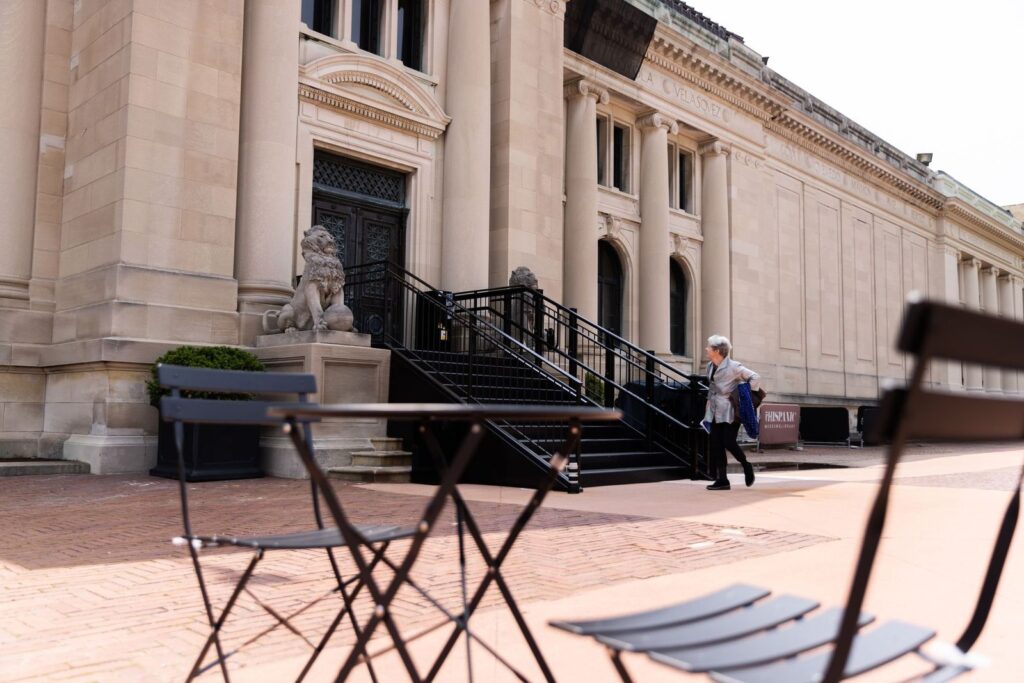
As soon as you enter through the heavy ornate iron gates leading to campus of the Hispanic Society of America, you enter a dream; the dream of one enormously wealthy philanthropist. This is what the Society’s dynamic Director Guillaume Kientz told me while he hosted me on a tour of the newly renovated historic Beaux Arts building. He referred to Archer M Huntington, who in 1904 asked his cousin, architect Charles P. Huntington, to design this impressive and extravagant campus called Audubon Terrace, which would come to host a complex of cultural institutions.
When this museum and library of the arts and cultures of the Spanish-and-Portuguese-speaking world opened to the public in the early years of the 20th century, its location—the Washington Height neighborhood in Northern Manhattan—was the perfect place. The area was populated with magnificent mansions, and after the turn of the century there was a rapid development of high-end apartment houses clad in limestone, and design in the historicist style of Beaux Arts architecture. Huntington, a scholar of Spanish culture and son of a railroad magnate, Collis P. Huntington, realized very early on that in order to make an impact, he should focus on a field of art not collected or researched, so he began collecting with the goal of opening a museum. He sought to bring Hispanic art to the attention of scholars and the public. While he could have bought any plot of land he wanted, he selected this hood to establish his institution. Today, it is situated far from Manhattan’s museum mile, and therefore is considered by the city’s art lovers as its ‘best kept secret.’ It was designed in the Beaux Arts, the academic architectural style used throughout that period for constructions of museums. Its neoclassicism responded to the role of the museum in education, art, and intellectual discovery.
The Hispanic Society was closed down for nearly 6 years for extensive renovations, with the strategic architecture plans being provided by Selldorf Architects. Working alongside executive architects Beyer Blinder Belle and landscape architects Reed Hilderbrand, the team has developed a comprehensive phased masterplan, seeking to bring the museum into the 21st century by replacing the roof, lightings, developing a better access, and revealing some of the original architectural elements which have been lost over the years. Guillaume Kientz, former curator at the Loure and the Kimbell Art Museum, is the new director, and he illuminated this gem.
The grand main gallery in terra cotta is unparalleled. Do not miss the masterpieces like the important paintings by Diego Velázquez, Francisco de Goya, or El Greco. Be sure to see the breathtaking Sorolla Room, entitled Vision of Spain, which includes 14 enormous murals commissioned by Archer Huntington himself, depicting scenes from the various regions of Spain. What is next for the Hispanic Society? The next phase of the masterplan is anticipated to begin in 2024 on the East Building. The continued renovation in the East Building will include a visitor center, special exhibition galleries, an education center, and a conservation lab which will be connected internally to the Main Building.






